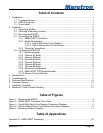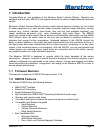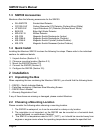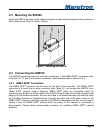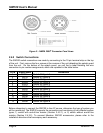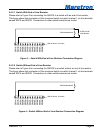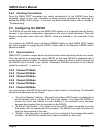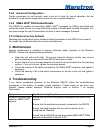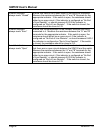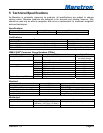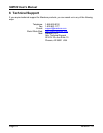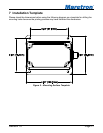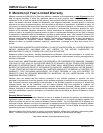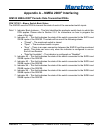
®®
Revision 1.0 Page 7
2.5.8 Advanced Configuration…
Certain parameters do not normally need to be set in order for normal operation, but are
included in an advanced configuration section for use in special situations.
2.5.9 NMEA 2000
®
PGN Enable/Disable
The SIM100 is capable of transmitting NMEA 2000
®
messages (or PGNs) associated with
monitored switch circuits. You may individually enable or disable each of these messages. You
may also change the rate of transmission of each of these messages if desired.
2.5.10 Restore Factory Defaults
Selecting this configuration option causes all stored parameters in the SIM100 to be reset to
the values they contained when the unit was manufactured.
3 Maintenance
Regular maintenance is important to ensure continued proper operation of the Maretron
SIM100. Perform the following tasks periodically:
• Clean the unit with a soft cloth. Do not use chemical cleaners as they may remove
paint or markings or may corrode the SIM100 enclosure or seals.
• Ensure that the unit is mounted securely and cannot be moved relative to the mounting
surface. If the unit is loose, tighten the mounting screws.
• Check the security of the cable connected to the NMEA 2000
®
connector, and tighten if
necessary.
• Check the security of all of the switch connections on the top of the unit and tighten if
necessary.
4 Troubleshooting
If you notice unexpected operation of the Maretron SIM100, follow the troubleshooting
procedures in this section to remedy simple problems. If these steps do not solve your
problem, please contact Maretron Technical Support (refer to Section 7 for contact
information).
Symptom Troubleshooting Procedure
No switch indicator data
visible on NMEA 2000
®
network.
Ensure that the SIM100 is properly connected to the NMEA 2000
®
network.
Ensure that the switches are properly connected to the SIM100.
Ensure that each indicator that you wish to monitor is not
configured as “Disabled”.
Ensure that the SIM100 has the appropriate NMEA 2000
®
PGNs
enabled as described in Section 2.5.6.




